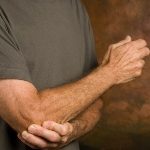 Have you ever noticed that your joints feel achy or stiff, especially when it rains? This could be a sign of arthritis. Chances are, this pain isn’t doing anything to help you feel younger. This could be because arthritis, simply put, means joint pain and inflammation.
Have you ever noticed that your joints feel achy or stiff, especially when it rains? This could be a sign of arthritis. Chances are, this pain isn’t doing anything to help you feel younger. This could be because arthritis, simply put, means joint pain and inflammation.
Arthritis consists of over 100 different conditions, ranging in severity. While most people associated arthritis with older people, they are not the only ones to suffer with this condition; arthritis can affect children as well as well as people in the prime of their lives.
According to the Public Health Agency of Canada, the most common types of arthritis are:
1.Osteoarthritis (OA) – this is the most common type of arthritis and is also known as degenerative joint disease. Typically, this type of arthritis causes joint pain, and swelling. The symptoms usually last two weeks or longer. Although, osteoarthritis can affect any joint in the body, it usually affects the hands, and weight bearing joints such as the hips, knees, ankles and spine.
2.Rheumatoid Arthritis (RA)–this is classified as an auto-immune disease which basically means that the body “attacks” itself, not a perfect scenario if you are trying to feel younger! RA can also cause joint pain, redness, swelling and a feeling of warmth around the joint. Just like OA, RA can affect any joint in the body, but is more common in the hands, wrists and feet. Deformities of these joints are also prominent features of this disease.
3.Systemic Lupus Erythematosus (SLE) – this is another auto-immune disease. SLE affects various areas of the body including joints, skin, lungs, heart, blood, kidney and brain.
4.Gout – this is caused by too much uric acid build up in the body. Usually the big toe is affected; however, gout can affect other joints of the body. Changes to one’s diet are often recommended for gout sufferers.
5.Juvenile Arthritis – this is a chronic disorder found in children and adolescents. Common signs include joint pain, and stiffness. This type of arthritis can occur in one or in multiple joints of the body.
Link between Rheumatoid Arthritis and Osteoporosis
A report in Medical News Today reports that there is a link between RA and osteoporosis in older individuals. Osteoporosis is a disease that affects the bones of the body and leaves an individual more susceptible to fractures. The reason for this link is partly to do with the steroid medications that are given to people suffering with RA. Steroids can cause bone loss, especially when taken for extended periods of time and can contribute to the development of osteoporosis. Additionally, because of the joint pain that people experience with RA, they are far less likely to do weight bearing exercise to feel younger which can lead to osteoporosis and bone weakness. According to the National Institute of Arthritis and Musculoskeletal and Skin Diseases, some studies have found that osteoporosis can be a direct result of rheumatoid arthritis. The bone loss that is seen in people that have osteoporosis and rheumatoid arthritis is most pronounced in areas directly surrounding the affected joint. A major concern that needs to be addressed is the fact that women are more affected by osteoporosis and are two to three times more likely than men to have RA as well.
If an individual is diagnosed with RA, it is vital to begin activities such as eating a healthy diet and exercising regularly to help avoid the development of osteoporosis. A healthy osteoporosis-friendly diet should consist of lots of minerals such as magnesium and calcium. As well, an active lifestyle, in combination with a healthy diet, including light aerobics and weight training will help to keep bones healthy and strong and help to fend of osteoporosis. It is therefore important to get an early diagnosis of RA so lifestyle changes, including diet and exercise can be initiated to prevent the complications associated with osteoporosis.
Preventing Arthritis & Feeling Younger
Arthritis is a very serious condition and can even be debilitating for some people. However, certain changes to your lifestyle can help you not only manage arthritis, but perhaps prevent it and make you feel younger. Examples of some of the changes to feel younger and can help prevent osteoporosis include:
Eat a healthy, balanced diet
Maintain a healthy weight and keep a healthy diet(especially important for women, as obese women are more likely to develop OA of the knees)
Supplement your diet with nutritional supplements (it is important to speak to your doctor first)
Exercise regularly and watch your diet – this will help to strengthen your bones and you will have increased energy which will make you feel younger
Avoid smoking and limit alcohol consumption – in addition to all of the health benefits, this will not only make you feel younger, it will help you look younger too!
If you are post-menopausal, speak to your doctor about possible hormone replacement therapy because a lot of bone loss happens during this time
If you accept a few of the changes mentioned about, you are helping your body in so many ways including helping to prevent arthritis and joint pain in general. Once you have adopted these new behaviors (and implement changes in your diet), your body will feel better and you’ll feel younger.
Advertisement
